Types of Temperature Sensors for Heating Boilers: Tips for Selecting
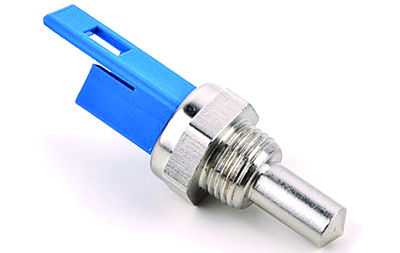
Temperature sensor for heating boiler - This is a special device that controls the operation of the coolant.
The sensor is used to carry out analysis of the current temperature regime in the room and, if necessary, its correction. This device helps to the maximum increase boiler performance and create a comfortable microclimate in the room.
The principle of interaction of the temperature sensor for the heating boiler
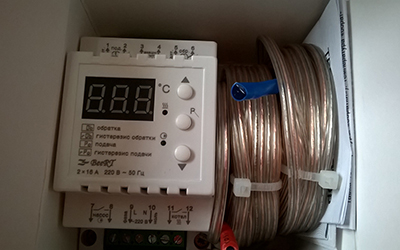
First, the temperature sensor determines the temperature level in the controlled room. Then the information obtained are sent to the control unit and are analyzed.
Depending on the set thermal mode, the device signals the need to increase or decrease the temperature.
After which the heating system will automatically make adjustments. Thus, turning the boiler on and off directly depends on the operation of the temperature sensor.
Types
Depending on the type of placement and method of data transmission, temperature sensors are divided into several types.
By placement method Sensors are:
- indoor – are installed indoors and control the temperature conditions inside;
- external – located outside the house, they adjust the indoor microclimate taking into account the temperature readings outside;
- overhead – mounted directly to the heating system pipe;
- submersible – are located inside the coolant.
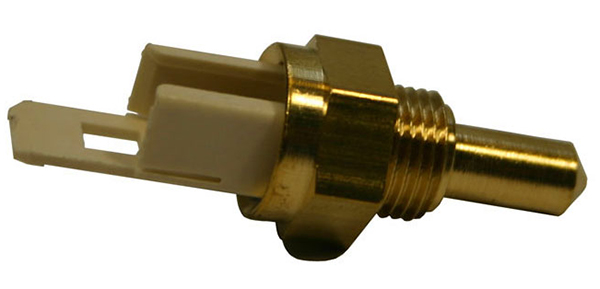
Photo 1. Immersion-type temperature sensor for the heating system of a gas boiler in a private house.
Wired and wireless
Depending on the method of transmitting information, temperature sensors are also divided into subtypes. There are wired and wireless. In the first case, the readings from the device are sent to the receiver via a wired connection. Wireless models transmit data remotely, using a special device.
Operating principle of the indoor unit
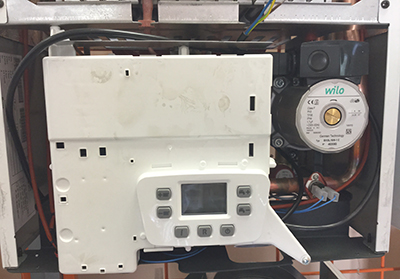
A temperature sensor located in a temperature-controlled device, determines the air temperature in the room or in the coolant itself.
The desired temperature regime is pre-set by the user and entered into the thermostat’s memory.
Job thermostat consists of comparing data obtained from the device and the set temperature regime.
Reference! In case incompatibility of these two indicators the system automatically makes adjustments (starting or stopping the boiler operation).
Baxi temperature sensor for heating system in a private house
Among the variety of temperature regulators, some of the best are considered to be devices from Baxi. They have a number of advantages that make the devices stand out from their competitors.
So, the positive qualities of this model include:
- cost-effectiveness during operation;
- the presence of a self-diagnostic system;
- the possibility of installing additional sensors or automation systems;
- the presence of an automatic regulator, which takes into account the temperature indicator both indoors and outdoors;
- possibility of use of this device to adjust temperature readings in the underfloor heating system.

Photo 2. The Baxi device is equipped with a self-diagnostic system, a temperature regulator depending on the season and time of day.
The advantages of Baxi devices also include the availability of additional accessories. The extended configuration can be equipped with:
- economy mode function;
- temperature regulator depending on the time of day and season;
- temperature regulator in different rooms.
Important! Such functions allow you to use the device with maximum efficiency, while significantly saving on energy costs.
Useful video
The video shows testing of a digital temperature sensor for a solid fuel heating boiler.
What to look for when choosing?
In order to give preference to “exactly that” temperature sensor, when choosing it, experts recommend paying attention to the following nuances:
- It's better to make a choice on proven and well-established brands.
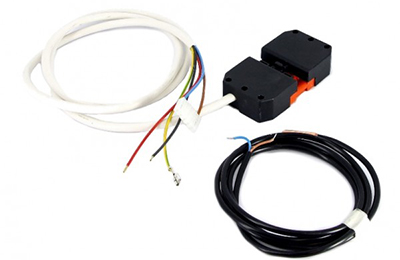
- It is good if both the boiler and the temperature sensor are made by the same manufacturer. This will avoid incompatibility between devices and increase their productivity.
- Before purchasing the device, be sure to It is worth taking into account its technical parameters (power, dimensions). Otherwise, there will be a risk of equipment downtime.
- You need to decide on the type of temperature sensor in advance. If the device is installed during a major overhaul, then in this case it is advisable to give preference to a wired device. If the repair is not planned, it is better to choose a model with radio communication.
- Ensure that the temperature control range meets the user's requirements.
Important! Before purchasing a temperature sensor, you need to make sure that the electrical network is capable of withstanding the corresponding voltage level.
Temperature sensor for heating boiler - practical and useful device, which will allow you to create a comfortable microclimate in the house and save the family budget.






Comments